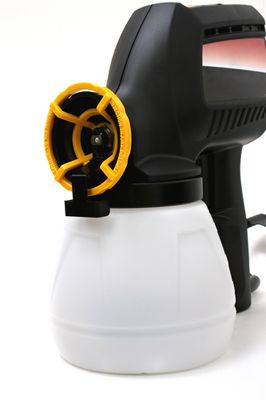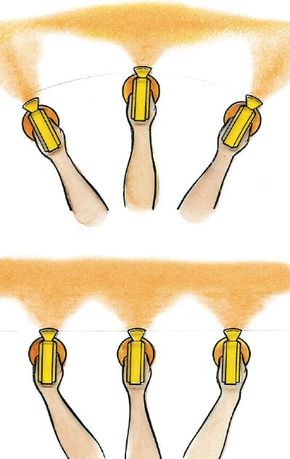For larger painting jobs, an airless sprayer is the most efficient way to apply paint. An airless sprayer uses an electrically run hydraulic pump to move paint from a bucket or container, through a tube, into a high-pressure hose, to a spray gun, and, finally, to the surface. Once you get the knack of it, an airless sprayer is easy to use, but if you rent one, make sure you get a set of written instructions.
The instructions will tell you how to flush the system with solvent (usually water or mineral spirits, depending on the paint you'll be using) and how to pump the paint through the hose to the spray gun. For cleanup, the procedure is reversed: Pump the leftover paint out and flush with solvent.
Advertisement
You'll only need the spray rig for a day or two, but plan to spend at least another day beforehand to thoroughly mask off everything you don't want to paint. Tape drop cloths to every floor surface. Drape windows, the fireplace, and doors. Remove all hardware or cover it with masking tape. Mask switches and outlets. Paint from a sprayer travels on the tiniest of air currents and settles a fine mist of overspray on just about every surface in a room.
Plan to keep at least one window in each room open and set up an exhaust fan to draw paint vapor out of the room. Be sure, too, to wear a painters' mask, a hat, and old clothes with long sleeves to protect your arms.
Airless sprayers are equipped with several filters to keep paint particles and foreign matter from clogging the spray tip, but it's a good idea to filter the paint yourself through a nylon stocking or paint filter before you pump the paint through the hose.
Advertisement

